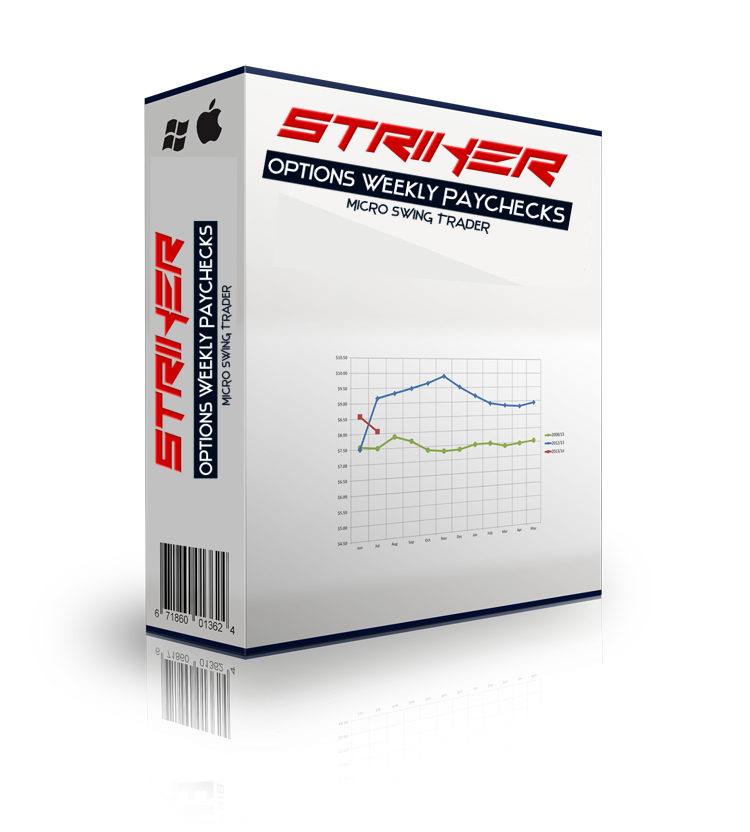Financial Independence With Options – How to Accomplish This Feat
Financial Independence With Options Comes with Getting a Solid and Simple Trading Plan that Has Worked Well Over Time Putting You in a High Probability Position for Success into the Future
That is, financial independence, so often being the aim but certainly not the achievement. One of the many powerful tools at your disposal in achieving financial freedom is options trading. Though somewhat intimidating at first, there is a number of knowledge about options that opens the floor for new ways of creating wealth and bringing steadiness to your finances. Here we’ll first define what options are and explain how they work, finally turning to how you can use them in your pursuit of financial independence.
Understanding Options: A Primer
The means by which financial independence could be reached through options would need to be understood in relation to exactly what an option is.
What Are Options?
Options are financial instruments that accord their holder the right, but not the obligation, to buy or sell an underlying asset at a predetermined price within a specific timeframe. There exist two major types of options:
-
Call Option: It is the right without the obligation granted to an investor purchasing a call option to buy an asset at a certain specified price; this is referred to as the strike price. Purchase decisions of call options by investors are made with an expectation of the increase in the price of the underlying asset.
-
Put Options: The buyer has the right to sell the underlying asset at the strike price before the expiration of an option. Put options are purchased by investors when they anticipate the falling price of the underlying asset.
Essentially, through trading in options, investors can get into unique positions where they hedge against their possible losses or increase the gains to the maximum without actually holding the underlying security in the portfolio.
Options Trading Basics
You should at least be familiar with some of the basic concepts that will enable you to travel successfully in the realm of options:
- Strike Price: The price at which it is exercised.
- Expiration Date: The last day the option can be exercised.
- Premium: What you actually pay for the option itself.
In-the-Money: A call option is "in-the-money" if the price of the underlying asset is higher than the exercise price, and a put option is "in-the-money" if the price of the underlying asset is below the exercise price. - Out-of-the-Money: If the price of the underlying is below the exercise price, then the call option is "out-of-the-money", and if the price of the underlying is above the exercise price, then the put option is "out-of-the-money".
These are the concepts that one must master as a precondition to harnessing options to achieve financial independence.
Unleashing the Power of Options toward Financial Independence
1. Efficient Leverage of Capital
One of the most tempting features of option trading must be that it enables one to control huge quantities of the underlying security at a reasonably low price. You just pay the premium for the option, and you’re right away exposed to the price movement without having to put up the full amount at the front end.
For instance, considering 100 shares of a stock at $50 per share would cost $5,000 to buy, an investor could buy a call option for some small percentage of the actual stock price. What this means is that you can amplify your returns through leverage—very important, especially when striving towards financial independence.
2. Selling Options to generate income
Another way financial independence can be acquired through options is by selling, also known as writing. There are two major types of strategies:
- Covered Calls: This is when you have a long position in a stock and sell calls on the same stock simultaneously. Extra money received from selling the call option increases your return on investments. If it goes above the strike price, the stock may be called away, but that is offset by the premium earned.
Cash-Secured Puts: Sell puts on those equities you would want to own, collecting the premium and likely buying the shares cheaper. If the stock falls below strike, you buy at a discount—asset addition to your portfolio while creating income.
These will help you generate a continuous flow of income, which shall be used in reinvestments or to sustain your lifestyle, inching you closer to financial independence.
3. Hedging Against Market Risks
Options also make an excellent hedging instrument, depending on which one looks at it. Buying a put on holding can reduce potential losses. It has been described by many investors as a form of a hedge in the protection of investors who want their portfolios to be insulated or safe from downturns in the market. A good number of these investors believe that it is a form of insurance policy that will cushion the losses accrued so as to preserve capital and still leave one an opportunity to be invested in the long term.
4. Enhancing Portfolio Performance
Options trading enables investors to use very many strategies, which will go a long way toward enhancing the performance of their overall portfolio: spreads, straddles, and strangles. Using such strategies allows one to generate extra income from the security, exploit market volatility, or insure against sudden changes in the market.
- Spreads: It means you buy and sell two options of the same class but having different strike prices or expiration dates. Spreads help you in controlling your risk while allowing benefit from some specific movements in the markets.
Straddles: In the underlying market, a call option and a put option are bought at the very same strike price and expiration date. Straddles are very effective in times of high volatility for it can make one benefit from big moves in either direction.
Strangles: This is also a very close cousin to straddles, but here, a call and a put option are bought with different strike prices but the same expiration date. It is also applied if one needs to take advantage of volatility without incurring bigger expenses like in straddles.
Incorporate all these strategies into your investing approach for a portfolio that’s much more resilient and better positioned for greater long-term financial freedom.
Basic Facts to Consider When Trading Options
Options are not invincible to the risks of financial independence. Some key considerations include:
1. Education and Research
Spend time learning about the intricacies of the options market before going into trading. This will entail study of trends, mastering various strategies for trade, and insight into the specific assets you will be trading. Web-based training, webinars, and simulators will give you invaluable experience before putting down real capital.
- Risk Management
Options trading has some inherent risks, and such risks need to be managed. Position sizing techniques, stop-loss orders, and diversification strategies to manage potential losses. Knowing how much capital you are willing to risk in each trade will keep your financial health in check, and help you march towards independence.
3 Emotional Discipline
Option trading can easily stir one’s emotions, especially by the types of market movements it deals with. It is thus through the course of time that emotional discipline will aid in long-term success. Establish a proper trading plan and abide by it, staying away from impulsive decisions based on fear or greed.
4. Keeping Up with the Market
The world of finance changes every day. Being aware of what is going on with the market trends and economic changes will help you optimize your trading strategy and improve your chances of success. Stay informed by following financial news, market analysis newsletters, and networking with a community of traders.
Conclusion: Your Path to Financial Independence
Options trading is indeed a route many use to achieve financial independence, but through the adoption of proper training and disciplined strategies, coupled with a commitment to ongoing learning, you can really attain a life of your design. Options trading leverages your capital properties efficiently, helps you secure a second income, and reduces your risks, which results in increasing your net worth and providing security to your finances.
Though there may be involved a bit of complexity and risk in options trading, for many who take time to really master the craft, the rewards are huge. Principally, it takes the journey of financial independence through decisiveness. Start here and now by getting educated and having a sound trading framework in place. Ultimately, options can be a powerful means to travel down the path toward achieving the financial freedom desired.
As you move within this exciting realm of possibilities, do not let out of your sight the twin virtues of patience and persistence. Financial independence is a marathon, not a sprint, and with the right strategies and mindset, one can unlock one’s potential and take control of one’s financial future.







